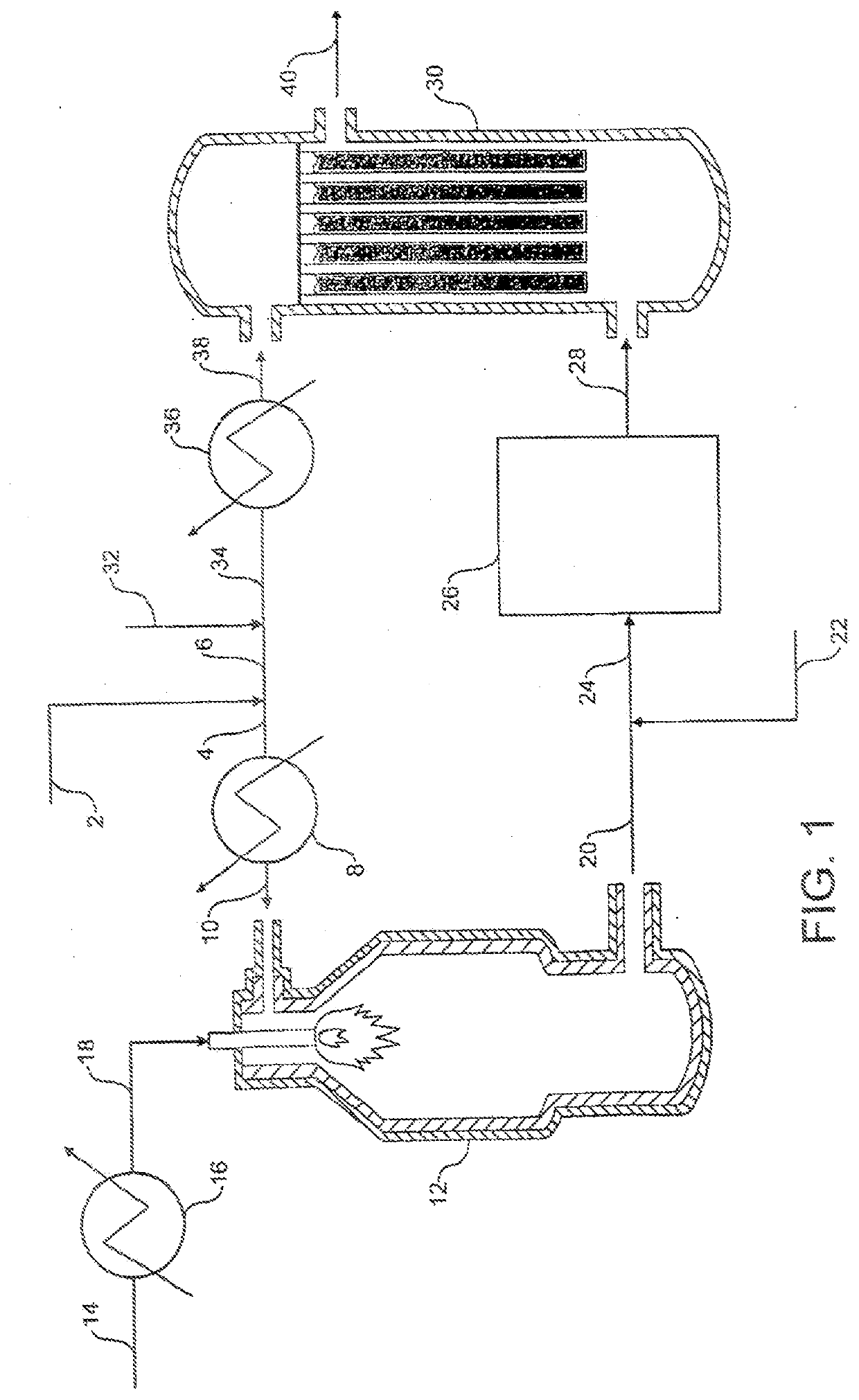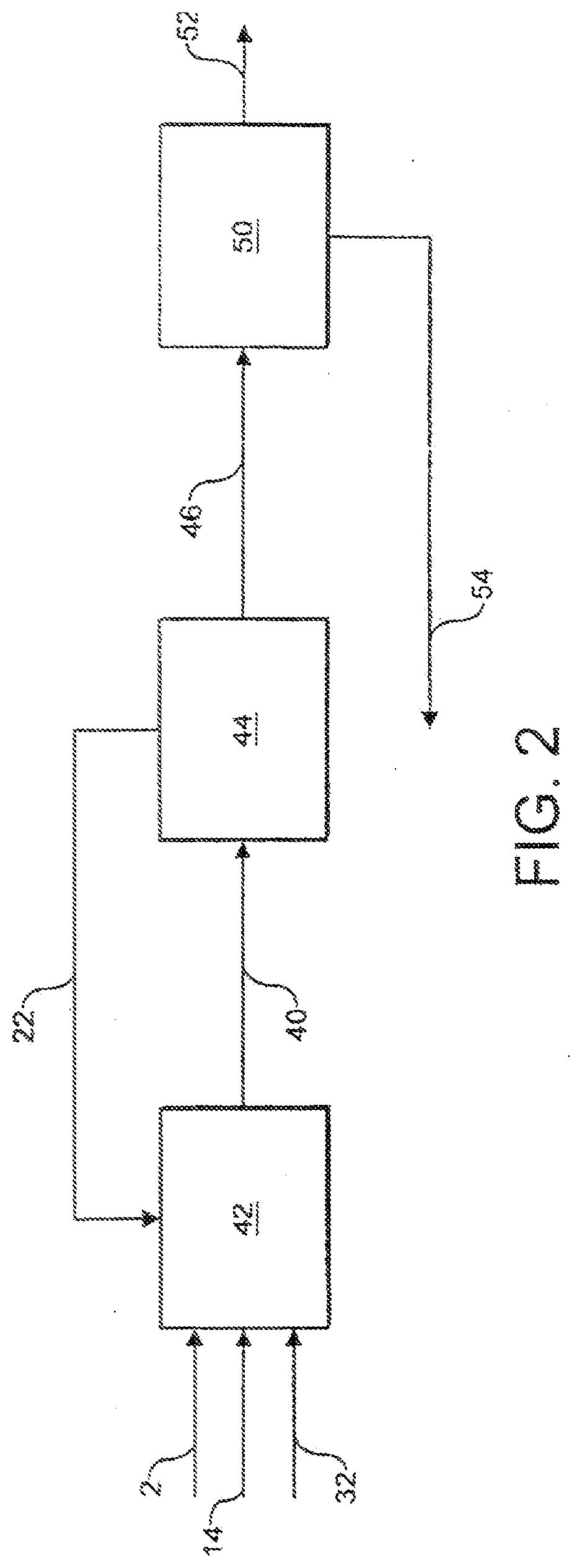Process and apparatus for the production of synthesis gas
a technology of synthesis gas and process, applied in the direction of hydrogen separation using solid contact, combustible gas purification/modification, combustible gas catalytic treatment, etc., can solve the problem that the syngas product feeding conversion process will unavoidably contain carbon dioxide, the opportunity to import carbon dioxide and/or export any separated excess hydrogen may not be available and/or economical, and the level of pollutant emissions to the environment may be reduced. , the effect of cost saving
- Summary
- Abstract
- Description
- Claims
- Application Information
AI Technical Summary
Benefits of technology
Problems solved by technology
Method used
Image
Examples
example
[0097]Referring to FIG. 1, a stream 2 of natural gas is preheated by indirect heat exchange 8, hydrodesulfurized as required, and divided into a first portion 4 and a second portion 6. The first portion 4 is introduced into a POX reactor 12. A stream 14 of oxygen is pre-heated by indirect heat exchange 16 and the pre-heated oxygen stream 18 is also fed to the POX reactor 12. The natural gas and the oxygen are reacted together in the POX reactor 12 to produce first syngas product. A stream 20 of first syngas product is removed from the POX reactor 12 at a temperature of from 1200 to 1400.degree. C.
[0098]A stream 22 comprising carbon dioxide is introduced to and cools the first syngas product stream 20. The cooled stream 24 is fed to a reverse water gas shift reactor 26 in which at least a portion of the carbon dioxide from the cooled stream 24 is reacted with at least a portion of the hydrogen from the cooled stream 24 to produce carbon monoxide and water. The catalytic reaction is e...
PUM
 Login to View More
Login to View More Abstract
Description
Claims
Application Information
 Login to View More
Login to View More - R&D
- Intellectual Property
- Life Sciences
- Materials
- Tech Scout
- Unparalleled Data Quality
- Higher Quality Content
- 60% Fewer Hallucinations
Browse by: Latest US Patents, China's latest patents, Technical Efficacy Thesaurus, Application Domain, Technology Topic, Popular Technical Reports.
© 2025 PatSnap. All rights reserved.Legal|Privacy policy|Modern Slavery Act Transparency Statement|Sitemap|About US| Contact US: help@patsnap.com



